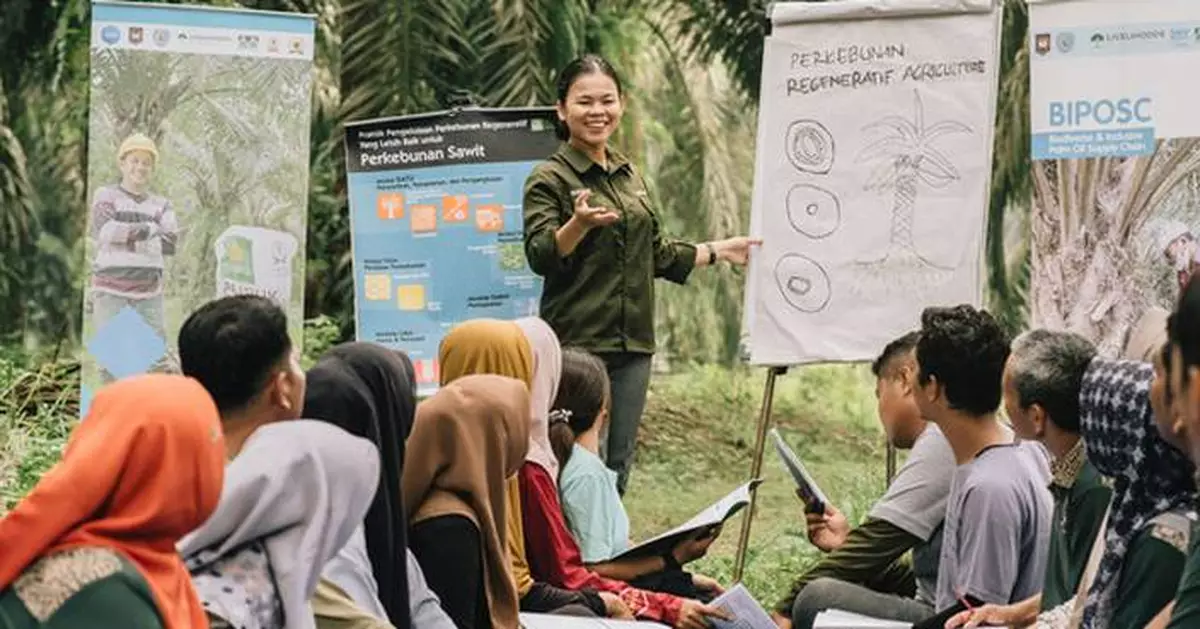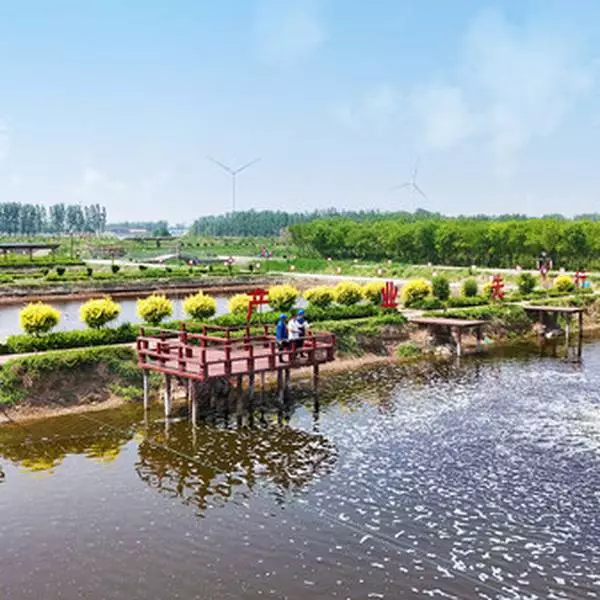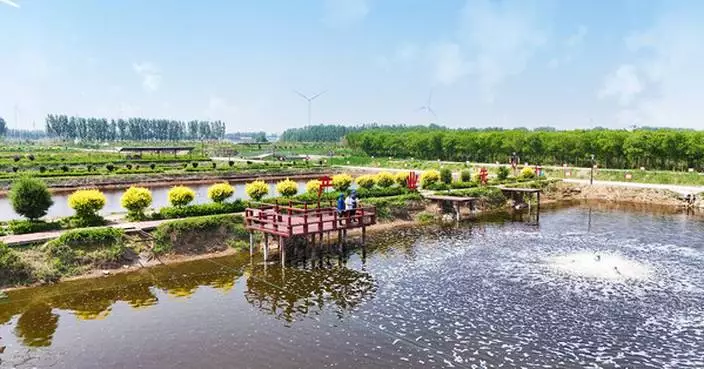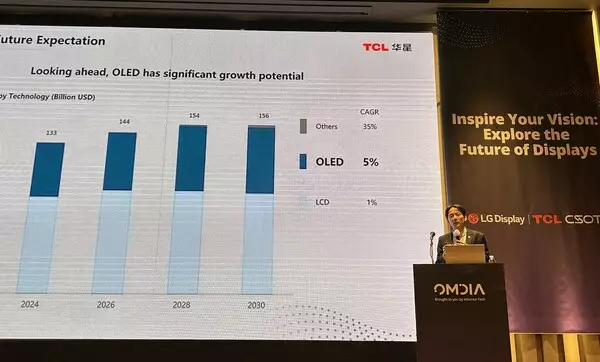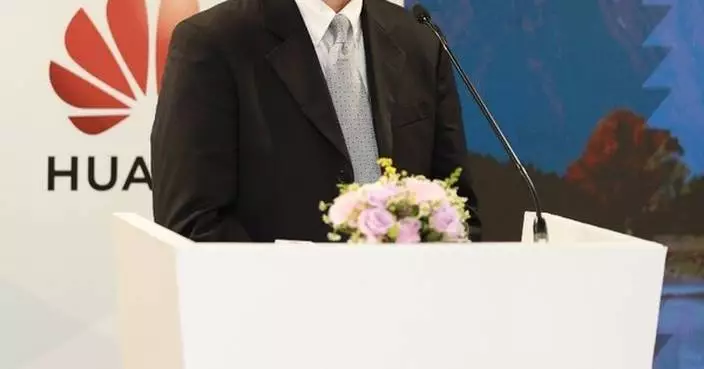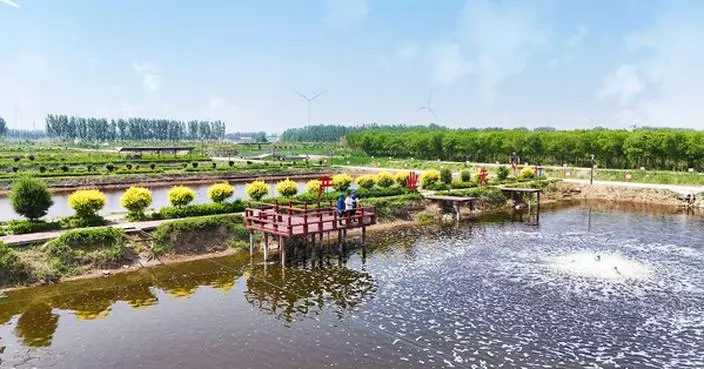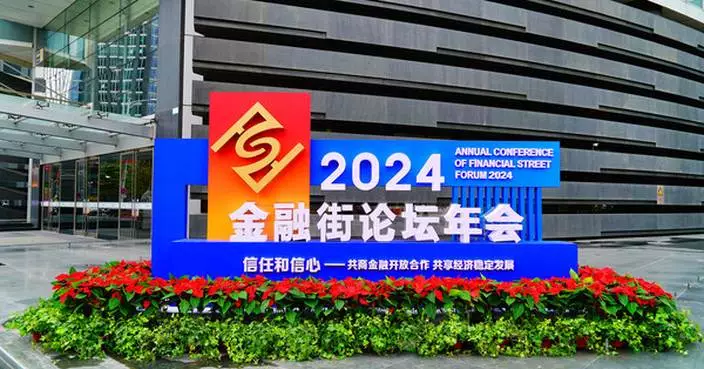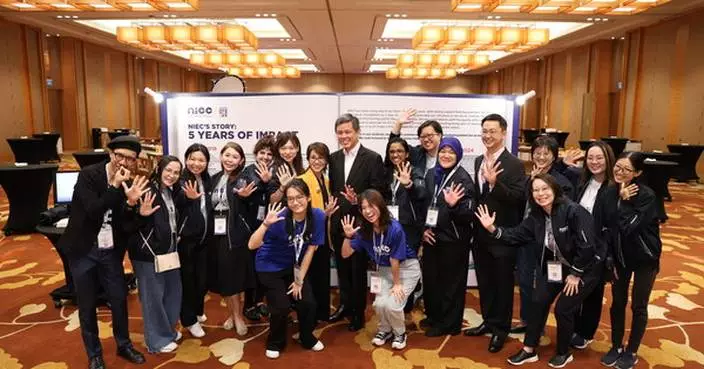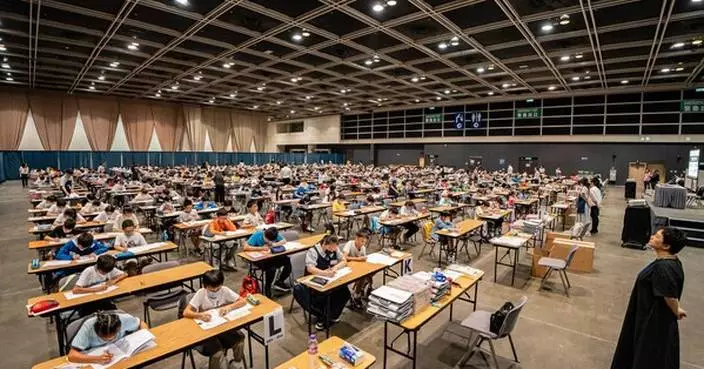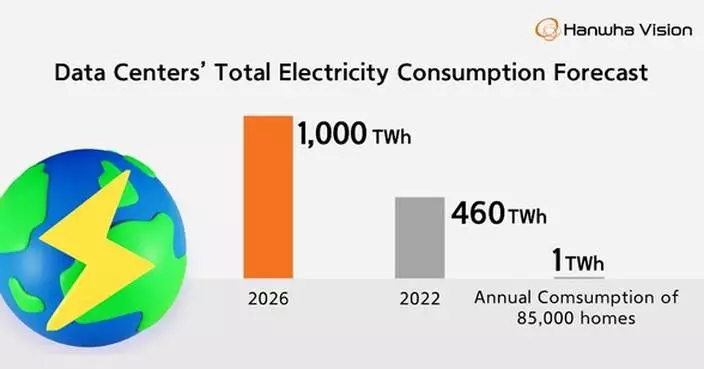JAKARTA, Indonesia, Oct. 18, 2024 /PRNewswire/ -- Musim Mas Group, the Livelihoods Fund for Family Farming (L3F), SNV Indonesia, and World Agroforestry (ICRAF) are collaborating to improve the knowledge and capacity of independent oil palm smallholders through the Biodiverse & Inclusive Palm Oil Supply Chain (BIPOSC) project.
The project began in 2021 and takes a long-term approach to sustain a deforestation-free supply chain, regenerate degraded land, restore local biodiversity, and improve the livelihoods of independent smallholder farmers in Labuhanbatu, North Sumatra. BIPOSC will achieve this through implementing regenerative agriculture, locally adapted agroforestry models, capacity-building for sustainable businesses, and others.
The independent palm smallholders taking part previously received complementary training from Musim Mas. Following the training, these smallholders formed a smallholder's association, Labuhanbatu Independent Oil Palm Smallholders Association (APSKS LB), North Sumatra. Musim Mas encourages smallholders to form associations to get better access to resources and obtain certification by the Roundtable on Sustainable Palm Oil (RSPO) and Indonesian Sustainable Palm Oil (ISPO).
"Musim Mas has long saw that smallholders are key to achieving palm oil sustainability, and that's why we lead Indonesia's most extensive smallholder program. We believe that the way forward is to collaborate with more partners to achieve a wider impact. With our BIPOSC partners, we hope to advance the skills and knowledge of smallholders through regenerative agriculture and related techniques. Regenerative agriculture and agroforestry have the potential to help smallholders be part of a sustainable palm oil supply chain. It could help them develop alternative sources of income, especially during the replanting period where their palm oil crops are unproductive, typically for three years," said Rob Nicholls, General Manager, Projects & Programs, Musim Mas Group.
In the face of climate change and threatened biodiversity, regenerative agriculture can play a role for small farms because it maintains soil health, prevents erosion and water runoff, and can potentially reduce greenhouse gas emissions and nitrogen leakage.
"As a global development partner organization, SNV aims to support Indonesia in achieving its Sustainable Development Goals (SDGs). To achieve this, we need to implement effective and impactful programs to transform agricultural and food systems, energy, and water. In the BIPOSC program, we promote a comprehensive regenerative agriculture and agroforestry model to maintain soil fertility and biodiversity, providing maximum benefits for farmers' livelihoods and economy," said Rizki Pandu Permana, Country Director of SNV Indonesia.
The key regenerative agriculture techniques taught include the application of bio-input, mulching to protect topsoil, planting cover crops, integrated pest management that reduces the need for chemical pesticides, and application of compost that reduces the amount of chemical fertilizers needed. To date, 1,032 independent smallholders received training and implement these techniques on their farms, representing a total land with a total area of 1,063.68 hectares. The project trained 25 village facilitators to provide hands-on assistance to smallholders, and seven demo plots established as pilot areas and learning facilities for regenerative agriculture.
"When I visited palm oil smallholders a few years ago in the area, their biggest concern was access to more fertilizers. While fertilizers play a key role in boosting yields, there was a noticeable gap in understanding how to protect the soil from long-term degradation. Smallholders needed more knowledge about maintaining soil health, preserving soil structure, and other critical factors. This is exactly what the BIPOSC project aimed to address, and we're pleased to see that the farmers involved are now reporting not only higher yields but also healthier soils on their plots," said Bernard Giraud, President & Co-Founder, Livelihoods.
The projectalso looks into capacity-building. In addition to home composting, the project enabled the local farmer association, APSKS LB, to develop and manage a composting unit with a capacity of 100-150 tons/month. Producing compost at scale with inputs from nearby mills and farmer plots, the unit offers compost to member farmers at half of typical market prices. In 2023, its first year of operation, the unit produced 588 tons of compost, and generated a profit of IDR 421 million. The project partners believe it is a model that can be replicated elsewhere.
"One of the most impactful outcomes of this project for smallholders is the Composting Unit as the business model around it. It enables smallholders to obtain compost affordably, and the profits are shared among member farmers. This is a practical solution to promote the adoption of composting, and all ASPKS-LB smallholders are now using compost in their plots," said Syahrianto, Chairman of the Labuanbatu Independent Oil Palm Smallholders Association.
As of 2023, independent smallholders manage about 41% of oil palm planted areas in Indonesia, representing 6.94 million hectares. This figure is expected to increase to 60% by 2030, making projects like BIPOSC critical in shaping the future of sustainable palm oil production.
Devane Sharma
media@musimmas.com
** The press release content is from PR Newswire. Bastille Post is not involved in its creation. **
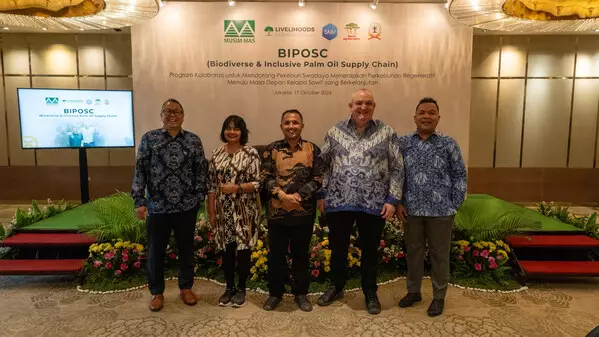
Enabling Regenerative Agriculture for Independent Smallholders in Indonesia: The BIPOSC Project, in Collaboration with Musim Mas, L3F, SNV Indonesia, and ICRAF
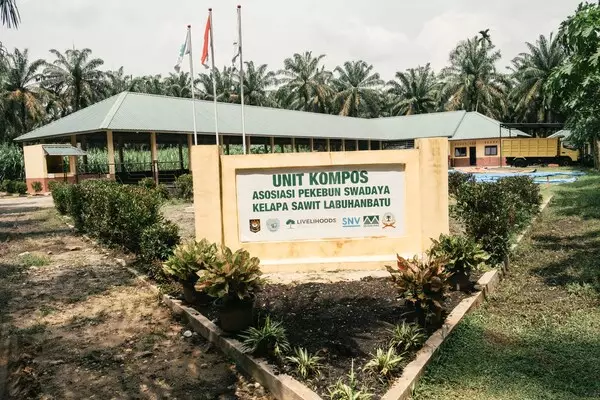
Enabling Regenerative Agriculture for Independent Smallholders in Indonesia: The BIPOSC Project, in Collaboration with Musim Mas, L3F, SNV Indonesia, and ICRAF
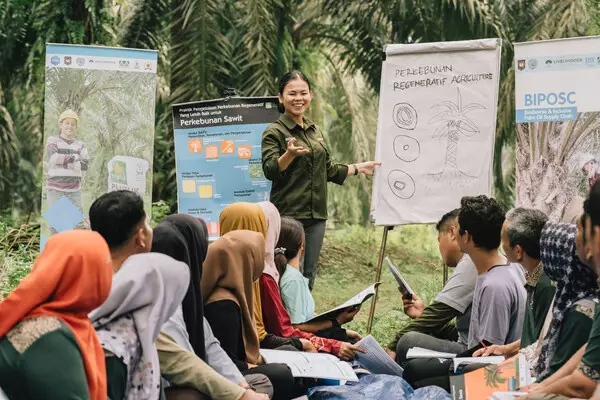
Enabling Regenerative Agriculture for Independent Smallholders in Indonesia: The BIPOSC Project, in Collaboration with Musim Mas, L3F, SNV Indonesia, and ICRAF


